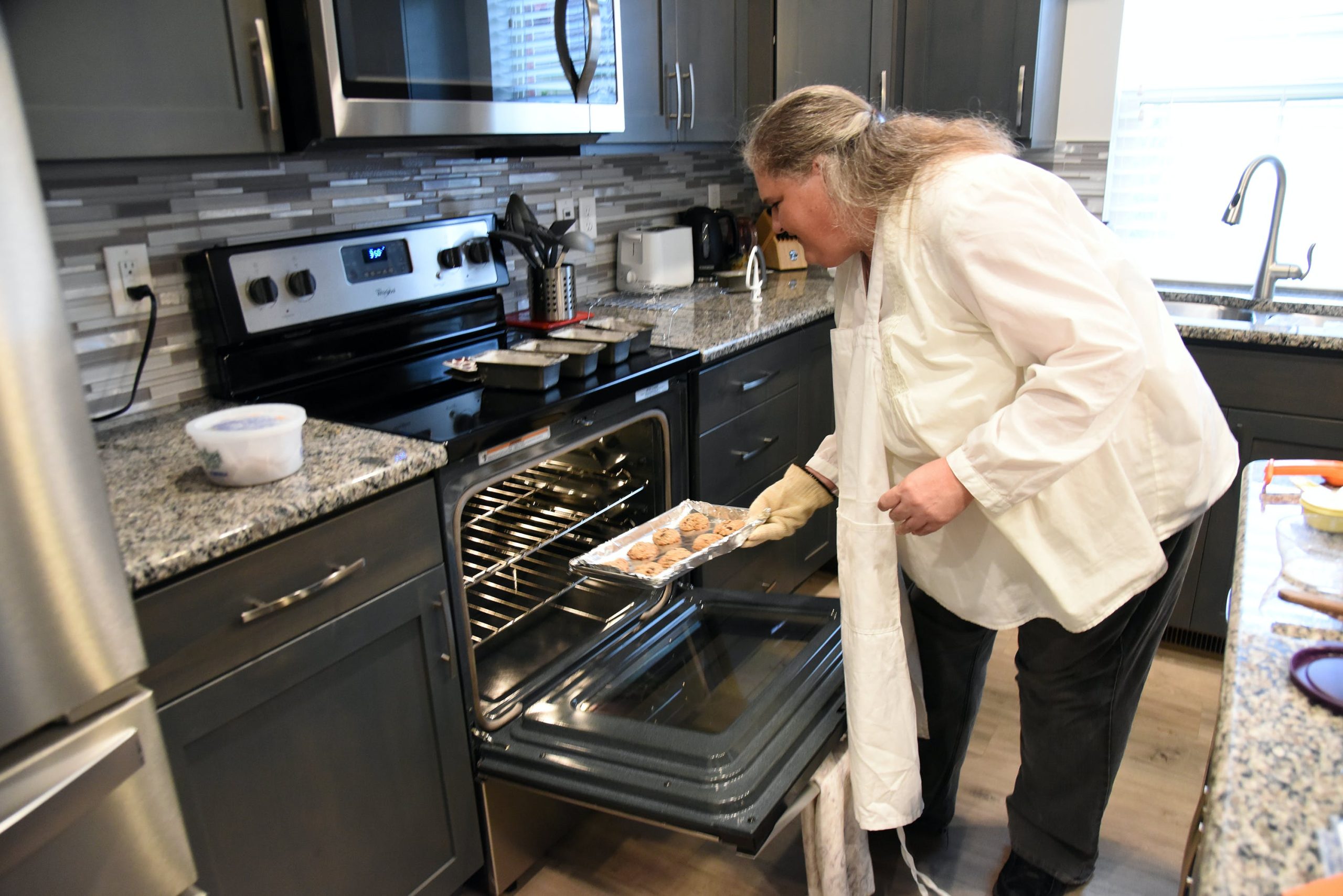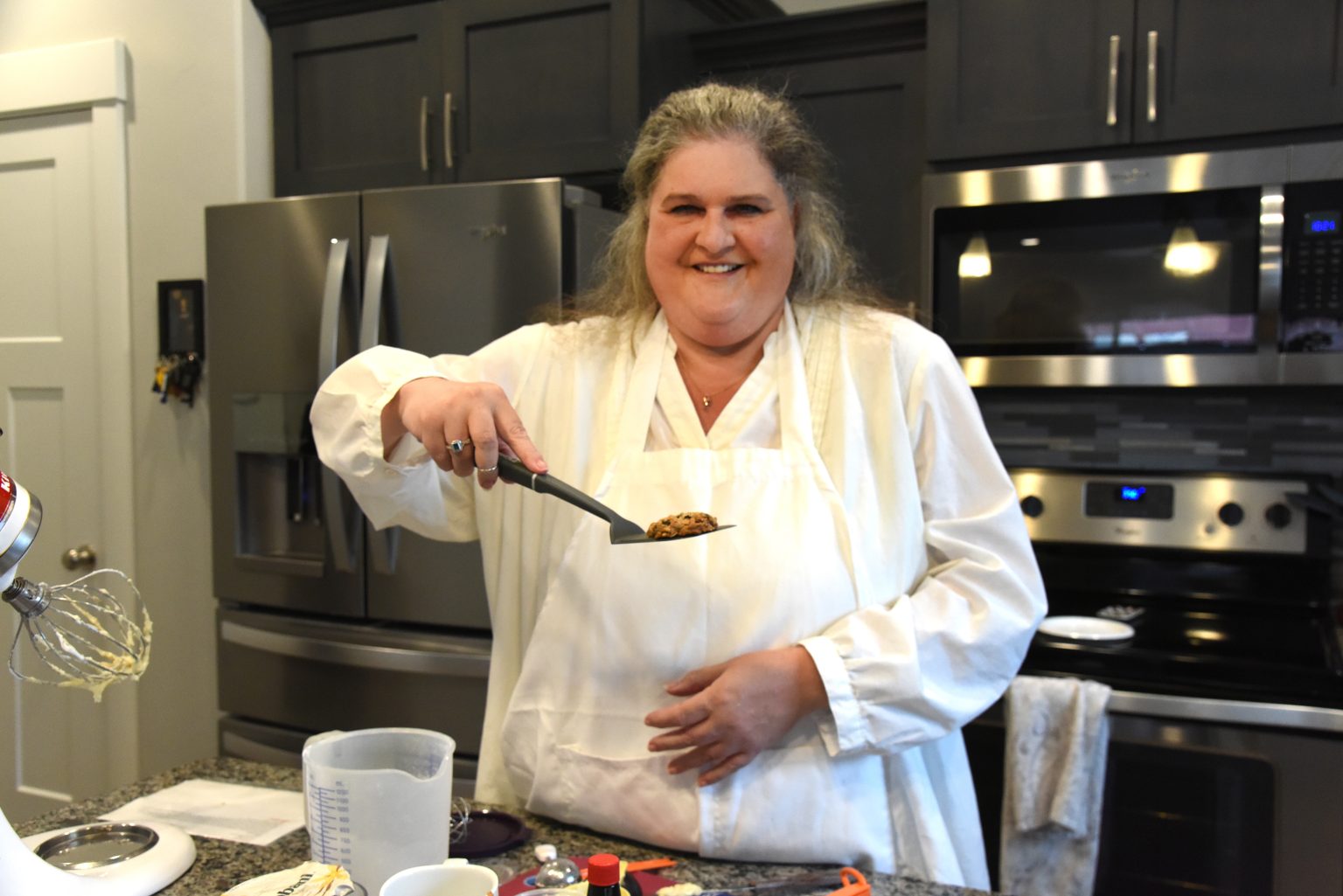Connie Bates messily throws together sugar, flour and other ingredients in her kitchen laboratory. She calls herself a “kitchen chemist.”
“Sometimes it blows up. Sometimes it doesn’t,” she said.
But for this Idaho National Laboratory (INL) employee, baking is a blue-ribbon affair. This year, her culinary concoctions won praises and prizes at the Eastern Idaho State Fair. Judges called her pear pie “perfection,” awarding her the coveted Best in Class Rosette, the gold medal of the cooking competition. “A perfect crust in terms of color and texture and the pears were harvested at the ideal time,” wrote one of the judges.
Bates also won blue ribbons for her oatmeal raisin cookies, cake-mix cookies and caramel candies, and second-place ribbons for her Big Hunk candy bar and cherry cordials.
And if dominating the baking competition was not enough, she also won a blue ribbon for a silver-and-green bracelet and Christmas ornament, along with an assortment of second-place red ribbons for other handmade crafts, antique camera, and beaded toilet paper earrings and necklace. It was her fourth year in the competitive jewelry category.
“It was like winning at the Olympics,” she said.

Bates, who has worked for INL for three decades, got into competitive cooking about four years ago after observing other would-be kitchen magicians. “I figured if these people could do it, so can I.”
Competitive cooking requires extreme attention to detail, something that comes naturally to Bates, who for the past 10 years has been an administrative assistant for INL’s Nuclear Science and Technology directorate, the backbone of the nation’s premier nuclear energy laboratory. She said juggling schedules, organizing travel and filing expense reports aren’t all that different than baking.
Both take patience and perfection. “If you don’t get it right, it doesn’t look good,” she said. “If you don’t have the right ingredients, it doesn’t taste good. You have to make letters look professional and can’t have misspellings in documents.”
Bates knows all the key ingredients to make the office run smoothly. Her supervisors and co-workers couldn’t agree more.
“Connie approaches her baking the same way she approaches her job at INL – with great dedication, attention to detail and the joy of doing what she likes,” said Monica Regalbuto, director of Nuclear Fuel Cycle Strategy. “At INL, she excels at networking, which makes her the go-to person when anyone has a question. She applies the same networking skills to her baking as she seeks the best ingredients and will drive any distance to get them.”
Perhaps that explains why she dominates the cooking competition. But there was a steep learning curve. “The first year, I failed miserably,” Bates recalled. She started out making caramels so chewy that “even the squirrels” wouldn’t eat them.
She didn’t give up. She experimented on cherry cordials and other candies that drew success at the fair and found that winning ribbons was “addictive.” She now competes every year with some new additions.
When it comes to baking, her co-workers are “quality checkers.”
“I love Connie’s cherry almond mousse. It is to die for,” said colleague Hollie Shipton. “Our admins love all of her desserts so much.”
Jeni Baker said Bates’ coconut bread took her to new delights. “This is the first year I sampled her coconut bread, and I was in heaven.”
Pete Wells, chief operations officer for NS&T, is eager to return to the office when pandemic restrictions are lifted to be able to test one of Bates’ latest creations.
“Connie performs magic in her kitchen. Not only does she know how to put the ingredients together, but she does it with patience and love, and as a result, everything tastes amazing,” said Wells. “We all look forward to getting back to ‘business as usual,’ if only to be able to test one of Connie’s latest recipes.”
But don’t ask for her recipe. She never measures anything or uses a cooking thermometer.
“I go by feel,” she said. “I’m my worst critic. If it doesn’t taste right, it doesn’t leave the house.”
Bates, a native of Idaho Falls, grew up with a spatula in her hand. She was baking bread and cookies, and canning peaches and pickles as a young girl. By age seven, she was collecting cookbooks, not dolls.
“I think I inherited my love for baking from my mom. She taught me to can peaches. We looked a mess,” she recalled, laughing at the memories of being covered in sticky sweet residue. “But the peaches looked beautiful in the bottles. And there was the thrill when you heard the seals pop.”
Not many people preserve peaches anymore, and you would be hard pressed to find canned produce of any kind at the fair. “It’s really a dying art,” she said, wistful of the days when her family grew and canned all their own food.
But she keeps the old traditions alive at the annual fair, mixing just enough of the old ways with her creative new twists to win the blue ribbons.
The inspiration for her recent award-winning pear pie came from an old recipe she found in a 1960s cookbook (called Grange cookbooks, they were written by the farmers’ wives who gathered at local granges for socials).
Each year, Bates ventures into something new, along with her standard staples of cookies, pies, candies and crafts. It could be something ambitious that would be unrecognizable to fairgoers a generation ago.
Winning isn’t easy, after all. Contestants must follow strict baking rules. Serious competitors like Bates spend hours poring over the exhibitors’ handbooks to make sure judges aren’t second-guessing whether they faked it.
The most important rule? “Everything has to be homemade,” she said.
Years ago, she would watch in awe as contestants hauled boxes of assorted pastries and pies to the state fair cooking competitions. “I’m that lady now.”
Now that the fair is over, her focus is on the holidays. Friends and family eagerly await her tasty treats.
“I enjoy the feeling I get when I give something that’s really good and they enjoy it,” Bates said. “Candy is a staple as a Christmas gift. It’s fun to do. I enjoy making it.”





